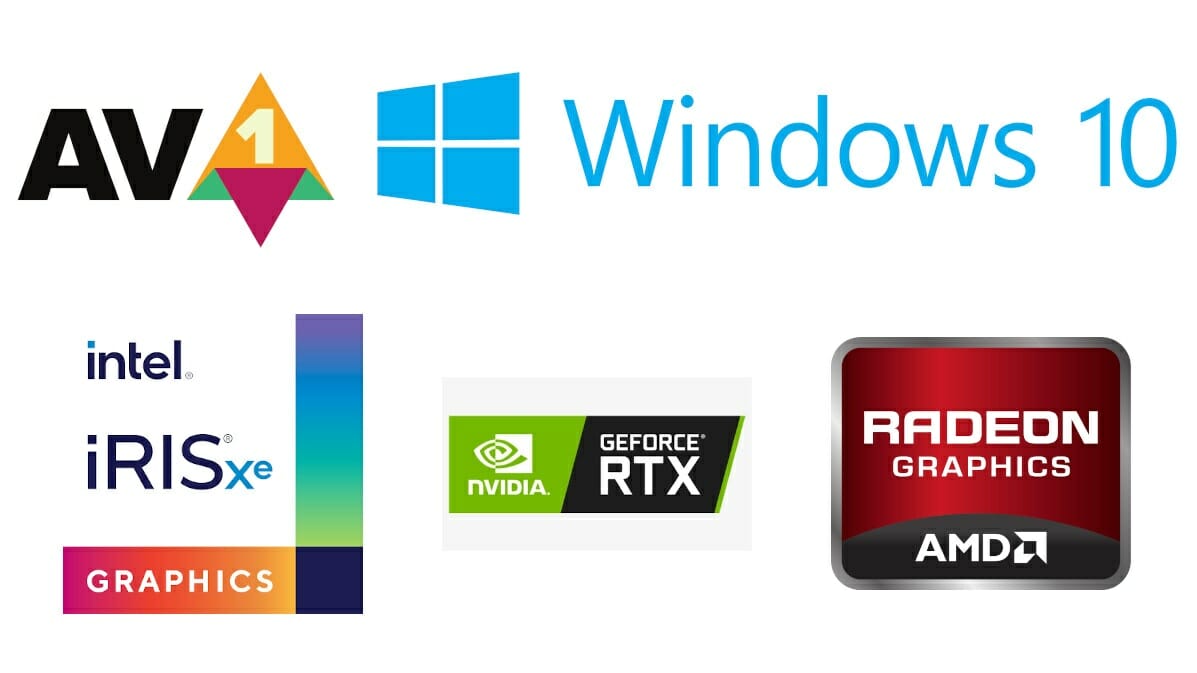AOMedia AV1 royalty-free video codec delivers up to 50% better compression than H.264 and up to 20% better than VP9 for the same video content, so streaming companies like Netflix and YouTube enabled the codec a while ago.
When I play a YouTube video in Chrome in Ubuntu 20.04 and check the stats for nerds info, it will usually show the video is played with “av01.0” codec which refers to AV1, but it’s played with software video decoding using libraries like Dav1d leveraging SIMD instructions. But ideally, you’d want hardware video decoding for lower power consumption for increased battery life, and potentially smoother videos.
 One good news is that Microsoft has recently announced support for AV1 GPU-accelerated hardware video decoding in Windows 10. The less good news is that support will be limited to recent and fairly powerful GPUs. So for instance, if you own mini PCs with older Intel SoC featuring integrated Intel HD/UHD graphics, AV1 hardware decoding won’t be supported.
One good news is that Microsoft has recently announced support for AV1 GPU-accelerated hardware video decoding in Windows 10. The less good news is that support will be limited to recent and fairly powerful GPUs. So for instance, if you own mini PCs with older Intel SoC featuring integrated Intel HD/UHD graphics, AV1 hardware decoding won’t be supported.
Here are the requirements listed by Microsoft so far:
- One of these new GPUs or CPUs with the latest drivers:
- 11th Gen Intel Core Tiger Lake processors with Intel Iris Xe Graphics or “Intel UHD Graphics for 11th Gen Intel Processors”
- NVIDIA GeForce RTX 30 Series GPUs
- AMD Radeon RX 6000 Series Graphics (coming soon)
- Windows 10 build 1909 (aka November 2019 update) or later
- Microsoft AV1 Video Extension
- A web browser or other application with hardware acceleration support for AV1
Once everything is installed and setup, you should get AV1 hardware-accelerated video decoding in Windows 10. If that works, CPU usage should be fairly low even for 4K or 8K videos.
NVIDIA provides more details about Windows 10 AV1 support for their RTX 30 GPUs, including the ability to handle 8K AV1 streams, AV1 hardware video decoding is enabled in Google Chrome and VLC, and NVIDIA is working with Twitch to support 1440p120 video game streaming at 8 Mbps.
Thanks to “NewsTip” for the tip.

Jean-Luc started CNX Software in 2010 as a part-time endeavor, before quitting his job as a software engineering manager, and starting to write daily news, and reviews full time later in 2011.
Support CNX Software! Donate via cryptocurrencies, become a Patron on Patreon, or purchase goods on Amazon or Aliexpress. We also use affiliate links in articles to earn commissions if you make a purchase after clicking on those links.




Depends on the machine on Ubuntu i guess. I have a years old intel integrated ultra low power fanless laptop. If i remember correctly, some intel software was needed to install for hw decode to work. Might have been Intel-Media-Driver plus VAAPI.
Sorry, now i remember i needed all that to enable hw video encoding h264 in Openshot. So no idea if it hw decodes youtube in AV1 on my hardware.
Only very new hardware has AV1 hardware decode capability. Like the ones listed in the article, maybe some ARM SoCs like Dimensity 1000, unannounced/unreleased 2021-2022 AMD APUs, etc.
And the driver needed to be enabled in some config text file to work, normal Linux weirdness i quess 😀
I understand Intel Tiger Lake have parts with Intel Iris Xe Graphics, and others with Intel UHD graphics, but I’ve just been told all Tiger Lake processors do support AV1.
Hi Jean-Luc,
This mean the codec is actually not part of the ASICs but rather a kind of a firmware layer over the actual GPU core. I thought codes where fully implemented in HDL langages and burn on the asic itself. That is you would need to change GPU version in ordre to benefit from new codec features.
I see, but that not the issue. The question is are the “Intel UHD Graphics for 11th Gen Intel Processors” found in some Tiger Lake processors also support the same features as “Intel Iris Xe GPU” found in other Tiger Lake processors? If so, why did Intel bother giving different names?
I got answer. It’s apparently just a naming thing for graphics with lower EU counts. It’s the same for Ice Lake.
@Jean-Luc I’ve been happy to support this site by not using an ad-blocker, but since the introduction of that maddening adhesion-container fixed position ad product I have enabled ad-block for cnx-software. I will try turning it off again in a month.
Thanks for the report William. I’ll have to think about it. Are you using the mobile or desktop (with sidebar) website?
Why would you compare it to H.264 and not H.265?
There are already patchs to hw decoding on AMD GPU on linux. I believe nvidia has one too in his closed source version.
https://lists.freedesktop.org/archives/amd-gfx/2020-September/053779.html